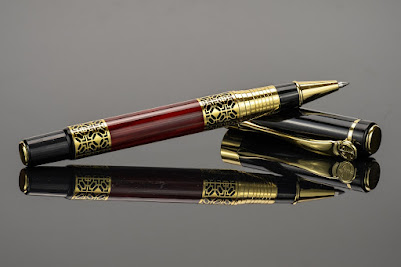Ink to Innovation: A Comprehensive Journey Through the Ball Pen's Storied Past, Evolution, and Present Status
The
ball pen, a common writing instrument in homes, workplaces, and classrooms
across the globe, has an interesting past filled with invention, change, and
broad use. We'll go into the fascinating history of the ball pen, examine its
development, and discuss its current place in the contemporary world in this
extensive blog.
The
Birth of the Ball Pen:
The
ball pen's history started in the late 19th century when researchers looked for
a dependable, practical replacement for conventional fountain and quill pens.
Before the groundbreaking idea of the ballpoint pen was developed in 1938 by
Hungarian-Argentinian journalist Laszlo Biro, the early designs had problems
with smearing and ink flow. In order to solve the problems with earlier
versions, Biro's design included a small revolving ball bearing at the tip that
dispensed ink uniformly as it moved.
Evolution
Over the Years:
Post-War
Boom:
The ball pen gained immense popularity post-World War II, as soldiers returning
from the front lines brought them back as souvenirs. The convenience,
reliability, and longevity of ball pens contributed to their rapid adoption in
both personal and professional settings.
Advancements
in Materials: Over the decades, materials used in ball
pens evolved. From the original design's steel ball, manufacturers transitioned
to tungsten carbide, enhancing durability and improving the overall writing
experience.
Variety
in Designs and Features: The ball pen market exploded with a
myriad of designs, colors, and features. Retractable pens, gel inks, and
ergonomic designs became commonplace, catering to the diverse preferences of
consumers.
Evaluating
the Ball Pen's Impact:
Ergonomics
and User Experience: The ball pen's simple, ergonomic design
ensures a comfortable grip, making it a preferred choice for prolonged writing
sessions. The smooth, consistent ink flow minimizes hand fatigue and enhances
the overall user experience.
Affordability
and Accessibility: Ball pens are cost-effective, making
them accessible to people across all demographics. This affordability, coupled
with their widespread availability, has contributed to their enduring
popularity.
The
Modern Ball Pen Landscape:
Technological
Integrations: Ball pens are still in use in the
digital age. Certain pens include stylus tips that work with touchscreens,
combining writing instruments from the past with modern technology.
Sustainability
Initiatives: Manufacturers are creating eco-friendly
ball pens, using recycled materials, and providing refillable choices in an
effort to lessen their influence on the environment due to a growing emphasis
on sustainability.
The
development of the ball pen from a novel idea to a widely used writing device
is evidence of human creativity and adaptation. When we consider the ball pen's
origins, development, and present-day use, it continues to represent
dependability, durability, and simplicity. The ball pen is an essential
instrument in our everyday lives despite the world around us changing all the
time, leaving an enduring legacy on the annals of history.
Also
Read This:
Unveiling the Strength: How Gorilla Glass Works to Protect Your Devices
The
Science Behind a Runny Nose When You Cry: Unveiling the Tears-Nose Connection
Understanding
Muscle Fatigue: Causes, Symptoms, and When to Seek Help
Understanding
Pulse Oximeters: A Comprehensive Guide











No comments